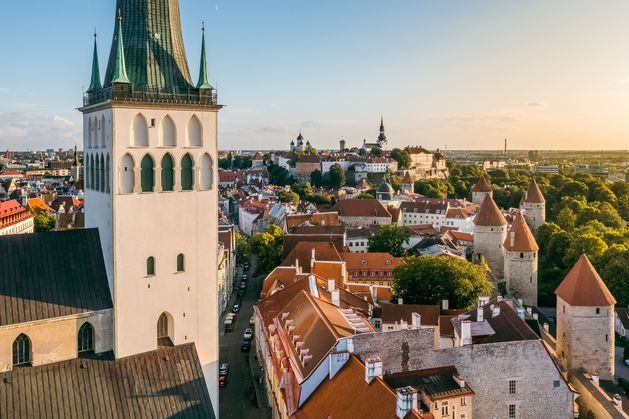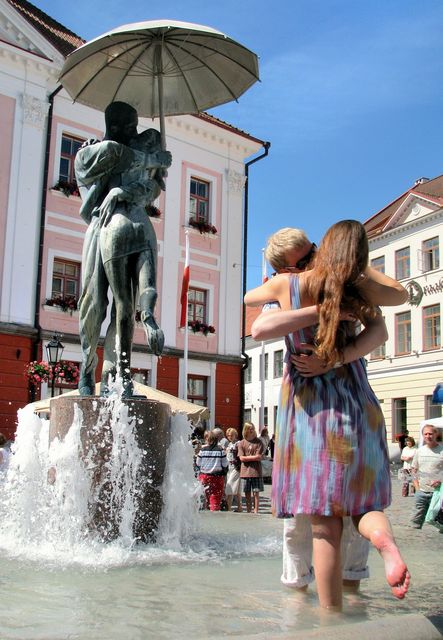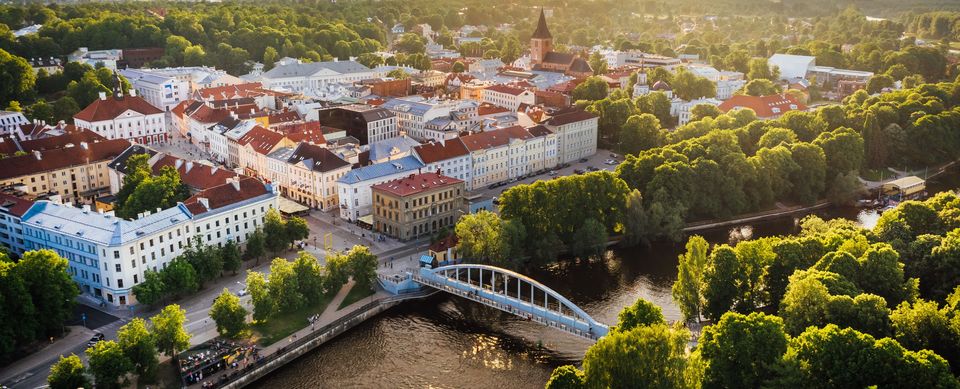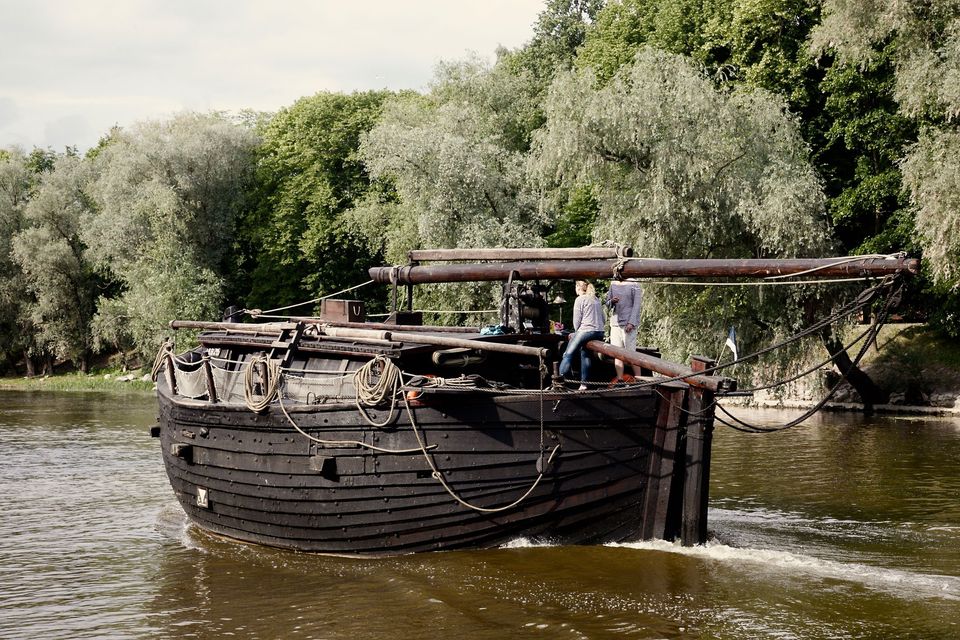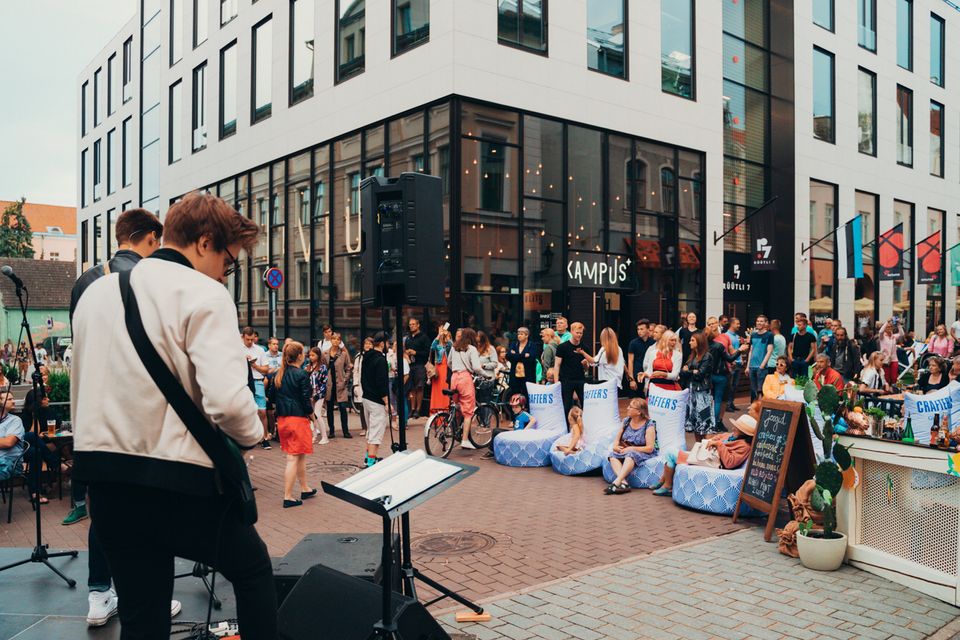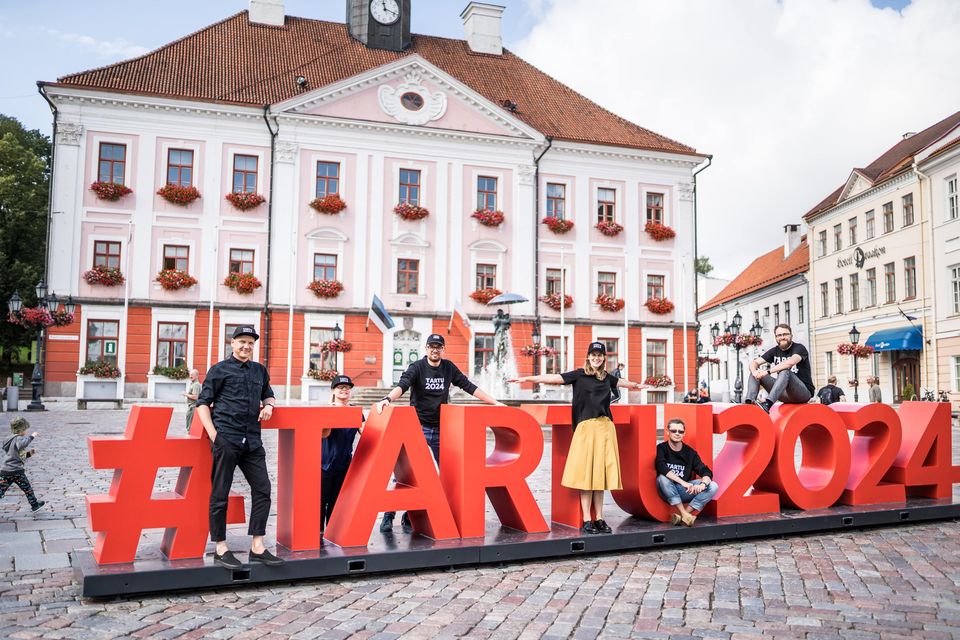And now, somebody is hitting me. Despite my limited pain threshold, I find the swatting pleasurable — cathartic, even. Earlier, when sauna master Rain Pärnaste mentioned a whisk, my mind instantly recalled the sugary buns my mother made during my childhood. Now, as a bunch of dried, leafy branches collide with my ruddy face and bare back, I realise the folly of thinking that during this unique experience we would be baking küpsisetort, for instance, the delicious Estonian cookie cake.
“The whisk — or viht — increases circulation,” Rain explains. “The oils and vitamins in the branches will enrich the skin.”
My precise location is Iglupark, one of many attractions in Tallinn’s newly developed Noblessner seafront quarter. Here, I’m discovering that Estonia’s sauna traditions, dating to the 13th century, are elaborate and ritualistic. Along with chanting and whisking, there are hygiene rites to observe using honey, soap and water. I’m even making intentions and greeting the Sauna Spirit as if it were a friend or family member.
My body might be in Tallinn, but my soul lingers between this world and the next.
Sunflowers in Tallinn. Photo: Vivian Velle and Visit Tallinn
Earlier in the day, in the capital’s charming and immaculately preserved medieval square, I visited Raeapteek, one of Europe’s oldest pharmacies. The 600-year-old building is just one of many examples of the importance of health and well-being in this Baltic state, which had, for centuries, endured invasions and occupations by Denmark, Sweden and its old foe, the Russian Empire. (Estonia’s independence was restored in 1991, alongside the fall of the Soviet Union.)
“The ethos behind our saunas is based on a close-to-nature experience — it’s where we relax, de-stress and cleanse,” Rain, clad in a quirky temperature-regulating felt hat, later explains as we cool down in the chilly Baltic Sea — ducks and cruise ships en route to nearby Finland providing company. “But, most importantly, it allows us to connect with our ancestors and their wisdom.”
Iglupark sauna in Noblessner. Photo: Rasmus Jurkatam
Rain also trains others to become masters to ensure these Indigenous practices flourish in this increasingly homogenous world.
“So many nations have conquered us, but our traditions show our resilience and survival instincts — we need to keep them alive,” the 25-year-old proudly remarks, sentiments that will surely resonate with the Irish.
There are many varieties of saunas in Estonia, including the UNESCO-recognised, chimney-less smoke sauna, which many consider the oldest and most authentic option. Rain adds that visiting a sauna, whatever your choice, is a group experience for Estonians akin to “movie night” and might occur between dinner courses.
Tallinn’s Town Hall. Photo: Kadi Liis Koppel and Visit Tallinn
His colleague, Johann Hermlin, adds that many men see themselves as alpha males, reluctant to be outwardly vulnerable or emotional. In a dark sauna, naked, they can be precisely that. He adds that the fragrant whisk, my earlier tormentor, is one of two smells that instantly makes him feel safe; the other is his mother’s pancakes, a staple in Estonian cuisine.
Alongside locals, Iglupark welcomes tourists and participants in corporate events. Rain jokes that someday, there might even be a visit from David Beckham, whose admiration of the Estonian sauna is well-documented.
“I’ve noticed that some people don’t know how to relax in a sauna,” he reports. “They chat to others or drink, which is fine, but what’s most beneficial is clearing your mind — there’s no need to think about yesterday or worry about tomorrow. It’s about being present in the moment.
“I’ve never seen a sad face following a sauna.”
I’ve only been here a day, but it’s difficult to imagine Estonians without a smile. I’m told that during the Soviet occupation, absurdist humour emerged amongst the people — another example of their dedication to protecting their health and well-being; after all, laughter is the best medicine.
(My favourite of the many jokes I hear on the trip is: “Yuri Gagarin was the world’s unluckiest man — he orbited the earth, and of all the places he could have landed, he fell back into the Soviet Union!”)
Tartu’s Town Square. Photo: Visit Tartu
These days, there’s plenty to be laughing about in this progressive and inclusive country, particularly for one minority group. In a first for a Baltic nation, 2024 ushered in a new dawn for its LGBTQ+ community: they are finally allowed to marry. In a land famed for folklore, Estonia has now decided to give its gay inhabitants the happy ending they richly deserve.
“As far back as the 1920s, there was a relatively open attitude to gay people in Estonia,” says Martin Vaino, Curator and Head of Exhibitions at Tallinn’s Vabamu, a private museum whose mission is to educate and advocate for justice.
He references A. Oinatski, an openly transgender person from the interwar era who became a local phenomenon, aided by her penchant for petty crimes.
“At that time, during the Weimer Republic, Estonia would have been seen to be left-leaning.”
That sadly ended in the wake of WWII when Stalin changed Estonia from a liberal country to a conservative one. Suppose the Soviet occupation hadn’t occurred, Martin feels “progress would have been made earlier — more in line with the West of Europe.”
We will never know; what we are certain of, however, is that the determination of the country’s LGBTQ+ community — along with the support of the government led by Prime Minister Kaja Kallas — means gay people can now, at long last, tie the knot with loved ones.
Estonian National Museum, Tartu. Photo: Visit Tartu
In the museum, I notice a striking sculpture of a man and woman standing on either side of a seesaw — a reminder of the fragility of freedom.
“It represents the importance of never taking our liberties for granted — whatever they are,” Martin explains. “For the LGBTQ+ community, there’s still much to achieve, but much to celebrate, too.”
Peipsi Barge in Tartu. Photo: Visit Tartu
Celebrations are currently commonplace in Estonia’s second city, Tartu, 180 kilometres south of Tallinn. It’s known for its universities, dramatic town square and unique wooden Peipsi cargo barges. In 2024, it doubles as one of Europe’s official Capitals of Culture. Their year-long programme is called the Arts of Survival and spotlights the knowledge, skills and values of the past.
“We want to share this wisdom, give it a new dimension, all for a better future,” says production coordinator Heigo Teder over entrecôte in the riverside Toko restaurant.
“Tartu might be small, but it’s big enough to make magic,” he adds while mentioning their annual 5,000+ students whose “new thoughts and ideas constantly flow”, just like the Emajõgi River that cuts through the city below us.
Buskers in Tartu. Photo: Visit Tartu
The programme’s reference to survival is appropriate, given the numerous obstacles the committee faced in recent years, namely the pandemic and Russia’s invasion of Ukraine. During challenging times, the arts are often overlooked and underfunded; thankfully, Heigo says the people of Tartu were supportive and played a crucial role in bringing the ambitious and costly plans to life.
“We can now show politicians that it’s sensible to invest in the arts because our events have had a huge economic impact on local businesses — every institution is booming due to our cultural programme: restaurants, bars, shops and hotels.”
While previous Capitals of Culture used their budget to build something physical as a concrete reminder of their special year, Tartu has invested in art that, while transient, should remain in the hearts of locals and visitors long after the curtain falls.
“Culture is for everyone, but everyone has different interests,” he acknowledges. “We tried to create something for everyone — in the first eight months, there were over 1,000 events, many of which were free. We’ve had rock concerts with international artists like Bryan Adams and Sting, theatre, dance, outdoor tours, film screenings and exhibitions.
“I think we’ve shown the world that Tallinn isn’t the only place to visit in Estonia.”
Tartu, Capital of Culture. Photo: Visit Tartu
One exhibition, housed in the nearby Estonian National Museum, is entitled Who Claims the Night? — an exceptional exploration of people’s varying nighttime experiences in Estonian cities over the centuries.
I think of it the following day when passing Tartu’s cobbled square, with its famous fountain sculpture of two figures embracing under an umbrella. Thousands of colourfully clad people are marching here for Tartu Pride, culminating a week-long series of LGBTQ+ events and a highlight of the Capital of Culture’s programme. The participants’ joy is palpable — unsurprising, given the landmark year for marriage equality.
Who claims the night? In an hour or two, few would begrudge the gay community if they did precisely that.
Factfile:
Domhnall was a guest of the Estonian Tourist Board. He stayed at Nunne Boutique Hotel in Tallinn’s Old Town and Hotel Lydia in Tartu.
Restaurant recommendations include Lee, Fotografiska, UMA, Kampus, TOKO and Kolm Tilli, while bar suggestions include Botaanik, ULA and Möku.
See visitestonia.com and tartu2024.ee

